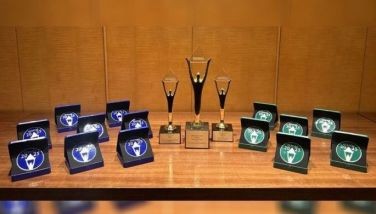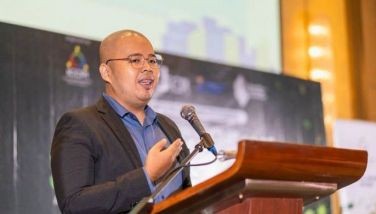The temples of Siem Reap
CEBU, Philippines - Travel destinations become more inviting and exciting when they are accessible and convenient.
Cebu Pacific Air's maiden flight from Manila to Siem Reap, Cambodia proved exactly that and way beyond. His Excellency Ambassador Hos Serynthonh, Royal Embassy of Cambodia in the Philippines, joined us together with top executives from the airline of choice that included Alex Reyes, CEB GM for Long Haul Division, hands-on and efficient JG Summit Corp. Communications Manager Viveca Singson and Michelle de Guzman, CEB Corp. Communications Assistant Manager who tirelessly took care of all our needs and always with a ready smile. Charles Lim, PR consultant for Selrahco Management Services was also on hand to assist the group.
We flew into Siem Reap after a two-hour and a half flight which was hardly felt because of the quality of Cebu Pacific's in-flight service. Add to this are the variety of sandwiches, munchies and sodas that are readily available for guests to enjoy.
Naturally, accommodations are just as vital in making each travel whether for business or pleasure a wonderful experience.
We spent the first two nights at the luxurious Sofitel Angkor Golf and Resort Spa. It is incredibly beautiful with five star amenities and excellent service. Good looking GM Fabrice Ducry and amiable director of Sales and Marketing Gregory Tugendhat hosted a savory breakfast for the group before our much anticipated tour.
Siem Reap is the capital of Siem Reap Province in northwestern Cambodia. It is also the gateway to Angkor region that served as the seat of the Angkor Empire, which flourished from the 9th to 15th centuries. It was considered the greatest civilization in Southeast Asia, reaching from the coast of Vietnam to Myanmar, from southern Laos down to the Malay Peninsula. At the center of this majestic kingdom ruled by god-kings rose the magnificent towers of Angkor Wat and the nearby capital city of Angkor Thom.
Angkor Wat, built in the early part of the 12th century by the Angkor ruler Suryavarman II, is a Hindu temple. It was constructed as a royal tomb and its central sanctuary housed an image of Shiva, the god with whom the king was said to be one. There are towers at each of the four corners of the innermost gallery and the taller central sanctuary rises in their center, the peak of Mount Meru, the very center of the world. It was here that the secret ceremony uniting the king and the god was conducted. Carvings of devata, female deities, appear throughout the temple and the galleries display scenes from the ancient Indian epic, the Mahabharata, as well as other Hindu myths, heightening the drama of this holy fortress. The temple is surrounded by a moat that is 570 feet wide and about four miles long. Unlike other world-class monuments, the ruins of Angkor are as yet unspoiled by progress and development.
Within the proximity to Angkor are the ruins of Ta Prohm, an example of a temple that was discovered in the midst of the jungle, untouched since it was abandoned. Massive tree roots, mainly the banyan, crawl over its roof and walls, a living testimony to the amazing life force of the jungle. This temple was chosen by the Ecole Francaise d'Extreme Orient to be in its natural state as an example of how most of Angkor looked on its discovery in the 19th century.
Another well-known and richly decorated Khmer temple is the Bayon which was built in the late 12th century and early 13th century as the official state temple of the Mahayana Buddhist King Javavarman VII. Following the death of the king, it was modified and enlarged by later Hindu and Theravada Buddhist kings in accordance with their own religious preferences.
The Bayon's most unique and distinctive feature is the huge number of serene and massive stone faces on the many towers, which protrude from the upper terrace and cluster around its central peak.
Located on the east reservoir is the pleasing reddish tone Pre Rup Temple which was built as the state temple of Khmer King Rajendravarman. The name is comparatively modern, meaning "turn the body." This reflects the common belief among Cambodians that funerals were conducted at the temple with the ashes being ritually rotated in different directions as the service progressed.
There are still so many ruins in the tropical forests of Cambodia that are slumbering peacefully, waiting to be discovered. But Cambodia is not just bout temples and ruins. It has interesting floating villages, night markets that sell authentic Cambodian crafts, sidewalk massage stalls that sort out tired bones and muscles, balloon rides, bicycle trips, museums and a lot more. But that is for another story, another time. (FREEMAN)
- Latest
- Trending























